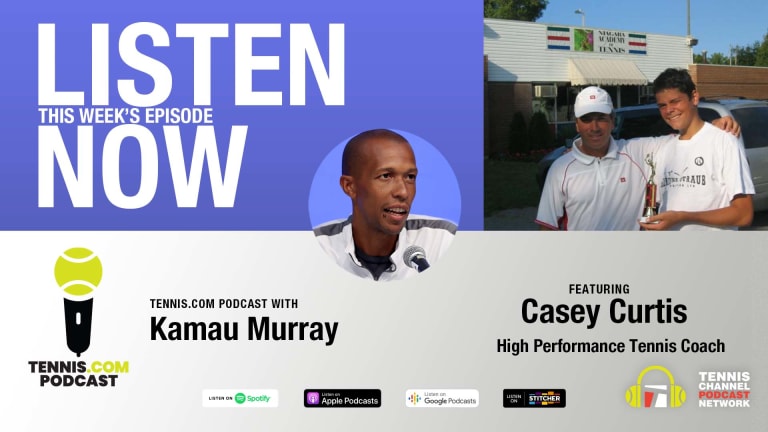Behind every great shot in tennis, there's a story of a hard work and preparation that enabled the player to his such a pristine winner. You don't have to watch Milos Raonic very long to identify what his signature shot is. That mammoth serve looks so simple yet arrives so violently across the net, forcing the opposing player to cover up in the corner as the ball rains down like body blows in boxing.
Behind one of the best serves of all-time is the story of a man from America who traveled north of the border and helped Tennis Canada reach their greatest successes. Casey Curtis was a California native, a tennis lifer, and will always be an honorary Canadian.
His appearance on this week's Tennis.com Podcast with Kamau Murray examines that early work with Raonic, how he grew the sport in an unconventional region, and what's next for the coach and for the Great White North.
